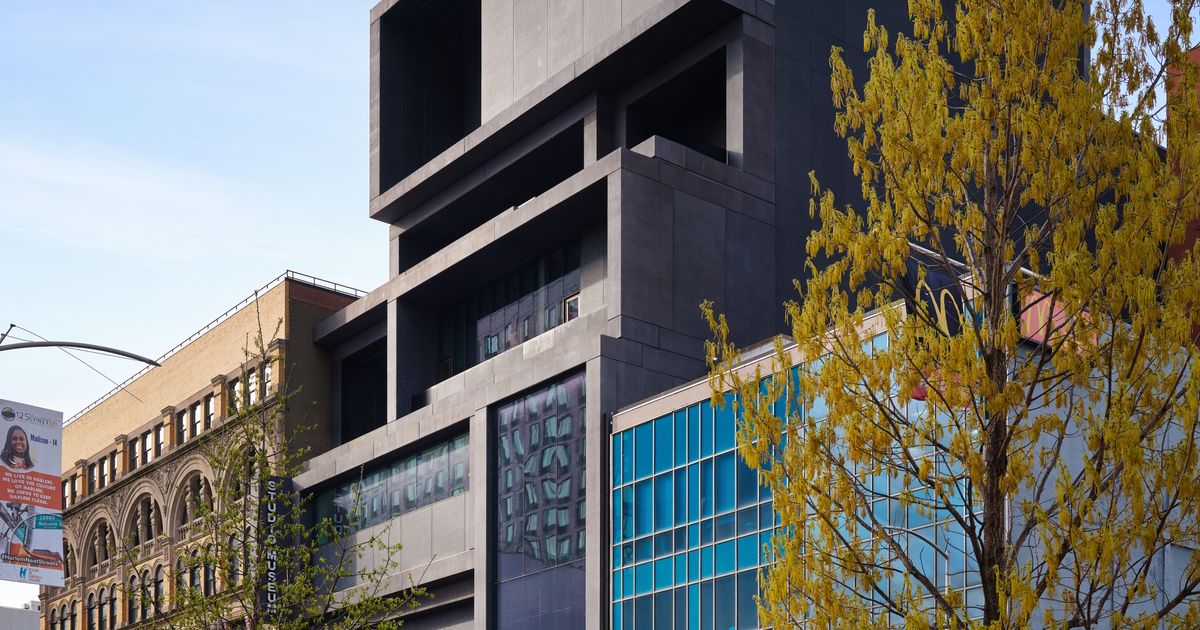
David Adjaye’s new Studio Museum in Harlem watches somberly over the daily tumult of 125th Street.
Photo: Dror Baldinger FAIA
The term “hostile architecture” refers to design that’s intended to discourage relaxation: divided benches, spiked ledges, inclined seats. David Adjaye has tweaked the concept to produce buildings that should be inviting but aren’t, the architectural equivalent of a bouncer’s deadpan “Can I help you?” As one of the last of the global superstars, Adjaye has spent 25 years attracting clients to his chilly virtuosity, which leaves me wondering whether they hire him for the austerity of his designs or detect a warmth that eludes me.
Two years after his reputation imploded in a sexual-harassment scandal, he’s returned with two major new projects: the Studio Museum in Harlem and the Princeton University Art Museum, both well under way when he withdrew from the public eye. I use the personal pronoun here, although no serious and complicated project springs from an auteur’s imagination; it emerges from the collaboration of designers, engineers, landscape architects, and specialized consultants. Adjaye Associates is a company with more than 100 architects in offices on three continents, and when these two clients scrambled to put some distance between themselves and the founder, one of his partners, Pascale Sablan, and another firm, Cooper Robertson, took the lead on both. But it’s still his work. Clients hired Adjaye’s outfit not only for its technical expertise and ingenuity but also for the leader’s aesthetic and stature. His favored palette — graphite-hues concrete, inky aggregate, black steel, stained wood, and bronze — is as recognizable in its way as Frank Gehry’s woozy curves or Zaha Hadid’s swoops. That’s why his sidelining was so disruptive.
In Adjaye’s work, those colors, that moodiness, are part of a full-body physical experience. Museums frustrate the primal desire to touch the art — all that sensuous marble and rippling brushstrokes, off-limits! In these two projects, the containers compensate. Their surfaces demand to be stroked so that fingertips register the contrast between rough concrete and polished terrazzo. The tooled fake leather in the Studio Museum’s elevator turns a few seconds of vertical travel into a moment of tactile gratification. A staircase handrail in the Princeton museum runs along a smooth channel hollowed out of a craggy concrete wall. You might scrape a bare arm if you brush against the wall, but you won’t skin your knuckles if you hold the bar.
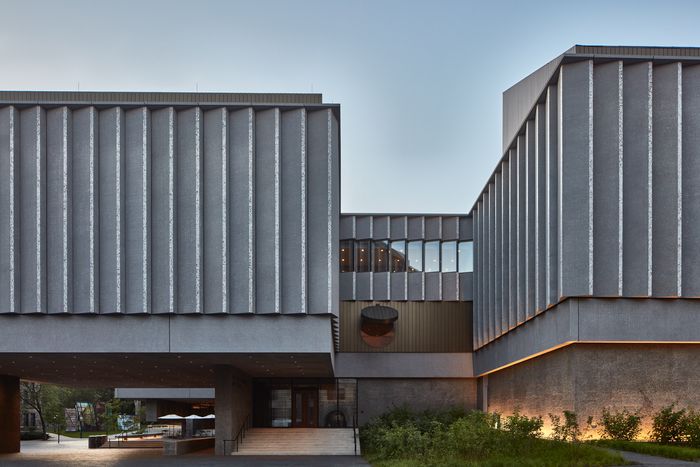
Adjaye’s Princeton University Art Museum is armored against the campus.
Photo: Richard Barnes/Courtesy of the Princeton University Art Museum
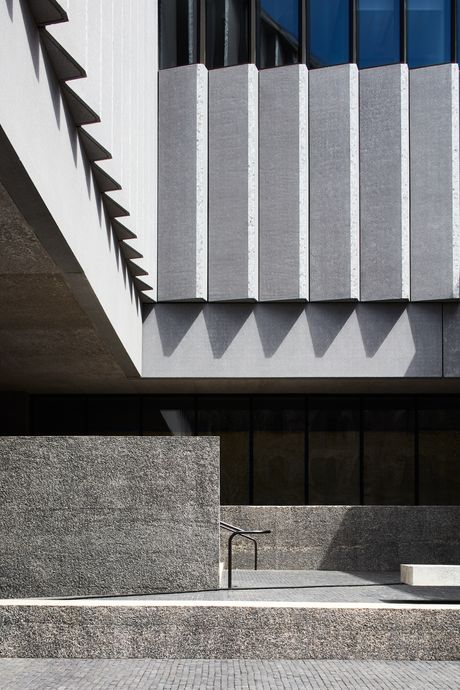

From left: Serrated concrete edges of the Princeton Museum facade are cut off to create bright pinstripes and deep shadows. Photo: Richard Barnes/Courtesy of the Princeton University Art MuseumPhoto: Richard Barnes/Courtesy of the Princeton University Art Museum
From top: Serrated concrete edges of the Princeton Museum facade are cut off to create bright pinstripes and deep shadows. Photo: Richard Barnes/Court… more
From top: Serrated concrete edges of the Princeton Museum facade are cut off to create bright pinstripes and deep shadows. Photo: Richard Barnes/Courtesy of the Princeton University Art MuseumPhoto: Richard Barnes/Courtesy of the Princeton University Art Museum
That sensitivity to how the human body interacts with sculpted space is a good architect’s superpower, but it’s one that Adjaye badly misuses. He inflicts subliminal discomfort, partly through the neo-brutalist scowl of the concrete and partly through proportions that seem calculated to intimidate. That’s especially true of the Princeton museum, a jangling grid of gray concrete boxes set into the sloping campus. Walking up the path from the train station, you slip into the opening between the outdoor terrace and the cantilevered gallery above feeling a little like a bug staring up at the sole of a shoe. Each of nine discrete pavilions is clad in serrated concrete panels, with each blade edge sliced off to make it look slightly less aggressive. Alternatively, you can arrive from the quad, descend a flight of stairs, duck beneath a shadowed overpass and down a high-walled passage, then go through a second low-ceilinged portal into an inordinately vast lobby; the art is almost all upstairs. A chiaroscuro of grays intensifies the alternation of compression and expansion into a menacing crescendo. The message seems to be this: Come on in — if you dare.
Beyond those outer defenses, the spirit of Louis Kahn keeps trying to haunt the anticlimactic interior. You can pick up echoes of the Yale Center for British Art in the skylights, wood paneling, gray concrete, double-height galleries, and long atrium-corridor. The most startling feature is a double-height lounge with a view up to display cases on the second floor. Four concrete slabs dangle from the ceiling, and though they function like flying buttresses, shifting loads outward to the muscular supports, they look like they’re poised to drop at the pull of an executioner’s lever.
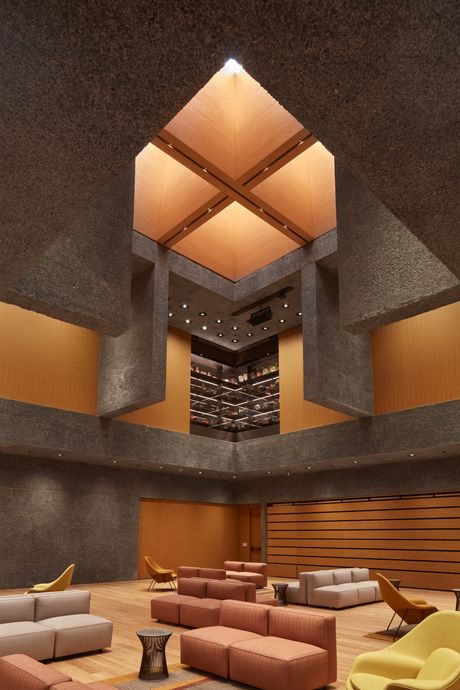

From left: The ground-floor atrium-lobby features flying buttresses and a sunken Roman mosaic floor. Photo: Richard Barnes/Courtesy of the Princeton University Art MuseumPhoto: Richard Barnes/Courtesy of the Princeton University Art Museum
From left: The ground-floor atrium-lobby features flying buttresses and a sunken Roman mosaic floor. Photo: Richard Barnes/Courtesy of the Princeton U… more
From left: The ground-floor atrium-lobby features flying buttresses and a sunken Roman mosaic floor. Photo: Richard Barnes/Courtesy of the Princeton University Art MuseumPhoto: Richard Barnes/Courtesy of the Princeton University Art Museum
The unease carries over, in more muted form, to the Studio Museum, where visitors entering from the busy street are instantly sent down a long runway flanked by a low wall. Does the architect not trust museumgoers to keep moving, so much so that he channels them with a concrete barrier? He does offer two choices: Make a U-turn down another passageway (think airport-security line but with solid dividers instead of ropes) to a set of bleachers that cascades down to the basement, or else advance into an atrium that’s high and tight, somehow both spacious and overweening. A charcoal-colored staircase zippers five stories up through the space, turning the heart of a small structure into a daunting well. Walking up and down the stairs is pleasant enough, but seen from above or below, the self-supporting structure brings to mind the narrow shaft in an Upper East Side house Adjaye designed, where, in 2011, its art-collector owners positioned a Pinocchio by the artist Maurizio Cattelan so that it lay sprawled at the bottom. There’s something about these vertical voids that makes me think of tumbling bodies.
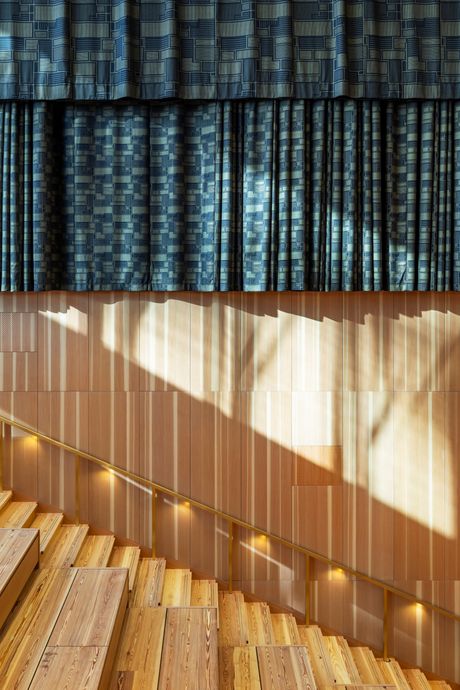

From left: The Studio Museum’s public hangout bleachers cascade from the street-facing window to the basement. Photo: Albert VecerkaPhoto: Dror Baldinger FAIA
From top: The Studio Museum’s public hangout bleachers cascade from the street-facing window to the basement. Photo: Albert VecerkaPhoto: Dror Balding… more
From top: The Studio Museum’s public hangout bleachers cascade from the street-facing window to the basement. Photo: Albert VecerkaPhoto: Dror Baldinger FAIA
The Studio Museum’s president, Thelma Golden, says that when she first began contemplating a new ground-up museum more than a decade ago, she asked the architects to incorporate three aspects of Harlem life: the street, the stage, and the sanctuary. She wanted a building that would be animated, public, theatrical, and embracing. The designers added a fourth element: the stoop, which they extended into those stair-flanked bleachers that they scooped out of the ground floor. I get the desire for a public hangout, but it’s hardly a unique Harlem thing. The pursuit of local specificity wound up yielding a design cliché, the same kind of terraced lounge that anchors TEN Arquitectos’ NYPL branch on 53rd Street, Diller Scofidio + Renfro’s Kravis Hall at the Columbia Business School, and, of course, the red TKTS staircase at Times Square. (At the Studio Museum, the bleachers are too deep to lean on; Cooper Robertson fitted them out with hinged lids that flip up into seat backs, which is a nice touch but still doesn’t make them truly comfortable.)
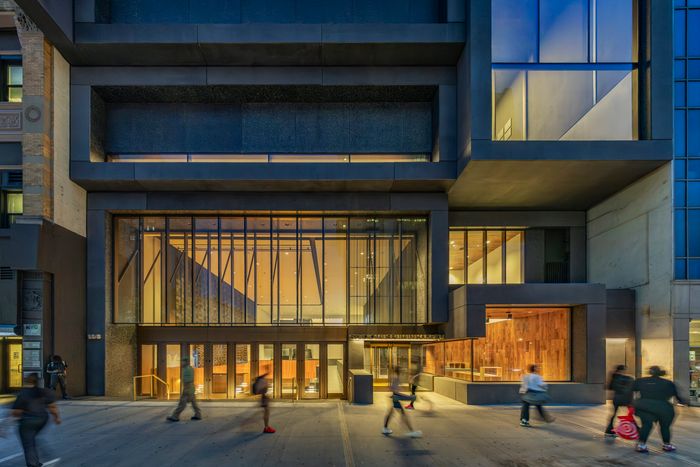
The Studio Museum’s entrance manages to be both beckoning and overweening.
Photo: Albert Vecerka
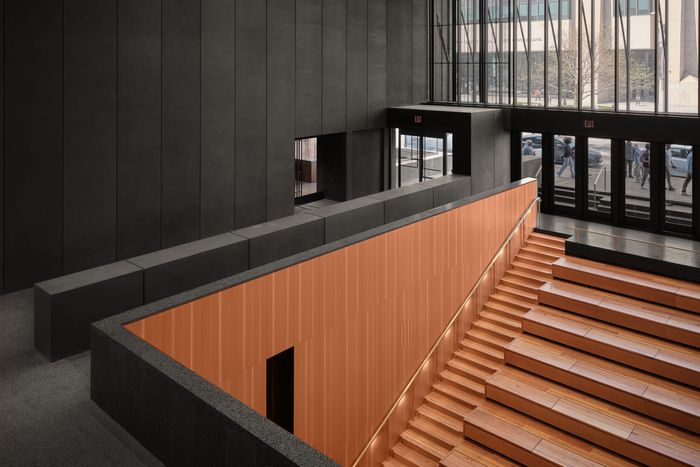
Photo: Dror Baldinger FAIA
Maybe it was inevitable that a successful neighborhood institution would grow more generic — okay, universal — as it matured, especially if the architect you hired to ease that change is a global figure born in Tanzania to Ghanaian parents, trained in London, and internationally famous for his design of the immensely symbolic National Museum of African American Heritage and Culture in Washington.
The Studio Museum is deeply enmeshed with history — its own, its neighborhood’s, its people’s. Among its prominent displays is Houston Conwill’s The Joyful Mysteries, a set of time capsules that were buried in the adjacent lot in 1984 and disinterred during construction and brought indoors. (They won’t be opened for another few decades.) Born above a liquor store in 1968, the museum later took over a shuttered bank and, eventually, the vacant lot next door. It grew as a riposte to mainstream arts institutions that promoted Black artists only desultorily, and then only once their careers had been built and cemented elsewhere. The little museum on 125th Street gave studio space, encouragement, and exposure to artists just when they needed it most — early on — and it demonstrated how broad and varied and ambitious their work could be. In recent years, though, every marquee museum has discovered Blackness. The Met created an Afrofuturist period room and commissioned a rooftop work from Lauren Halsey, the Whitney honored Amy Sherald, the Royal Academy of Arts in London has a current retrospective devoted to Kerry James Marshall, Jordan Casteel got the great master treatment at the New Museum, MoMA mounted “Reconstructions: Architecture and Blackness in America.” As the market for contemporary art grew ever more incandescent over the past quarter-century (until it fizzled last year), gallerists circled the graduation shows at Yale, trolling for fresh talent.
Golden points out that the Studio Museum still plays a role in that process of validation. The institution is no longer camping out, scraping by, or making do. “We’re permanent,” she says. The implication is clear: When the juggernauts lose interest in equity and the fashion for social justice passes, the Studio Museum will be there as a pillar of Black culture and a refuge for Black artists. And now, at last, it has all the appurtenances of a major establishment: double the exhibition space, up-to-date climate control, a roof terrace, high-tech classrooms, a loading dock, an art elevator, and ceilings high enough for, say, the sculpture of Martin Puryear. Most of all, it has money: The lure of an ambitious construction project helped Golden raise $307 million.
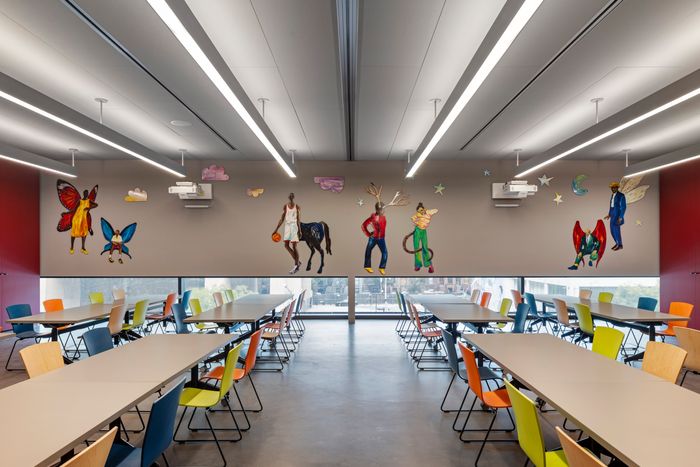
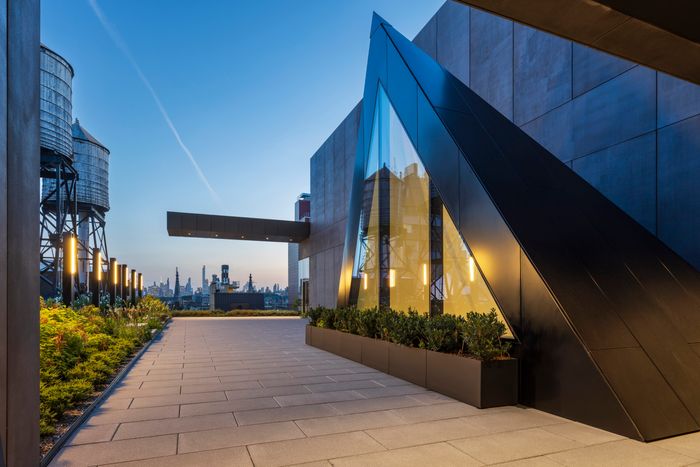
From left: The general public won’t see some of the Studio Museum’s most alluring spaces: a classroom with windows designed for little kids, and the rooftop terrace. Photo: Albert VecerkaPhoto: Albert Vecerka
From top: The general public won’t see some of the Studio Museum’s most alluring spaces: a classroom with windows designed for little kids, and the ro… more
From top: The general public won’t see some of the Studio Museum’s most alluring spaces: a classroom with windows designed for little kids, and the rooftop terrace. Photo: Albert VecerkaPhoto: Albert Vecerka
But the building expresses another chronology that has nothing to do with Harlem. With its abundance of concrete, startling interior views, and play of deep shadows, the design invokes the ornery inventiveness of Kahn and Paul Rudolph, combined with the corporate sleekness of MoMA’s most recent iterations by Yoshio Taniguchi and Diller Scofidio + Renfro. I suppose it’s a sign of Harlem’s evolution that a community of renegades and visionaries, aspiring to an emblem of local and racial pride, wound up with a product of mainstream modernism. Golden passes on a word of appreciation she’s heard often from her Harlem neighbors: elegant. It’s true. The new museum sits on its block, on 125th Street across from the Adam Clayton Powell State Office Building, with an air of monumental refinement. It rejects the glazed glitz of the shopping center down the block and announces that there’s substance behind the façade. There’s plenty of glass facing the street, but it’s tastefully recessed in rectangular frames of dark concrete arranged in an irregular grid. The façade has personality and depth.
So does the interior, once you move past the welcome and circulation areas into the galleries themselves. The blinking-light sculptures of Tom Lloyd, whose work inaugurated the newborn museum nearly six decades ago, light up a barrel-vaulted gallery like stained-glass windows in a chapel. Adjaye has also sprinkled the space with an assortment of nooks to complement the traditional neutral rooms. A windowed niche at one end of a hallway showcases Barbara Chase-Riboud’s Cleopatra’s Cape, a pillar of tresses and shimmering mosaic tiles. A landing at the top of the grand staircase provides the perfect berth for Karon Davis’s Fix Me, a sculpture of a supine ballet dancer lofting another into flight. (Less felicitously, the curators have also hung paintings and photographs along narrow horror-movie hallways, awkwardly lit by an LED strip overhead.) And yet, all that architectural stagecraft and choreographed precision left me with a strong urge to leave — to be ejected back into the rattling street and out of the architect’s oppressive control.
Related

